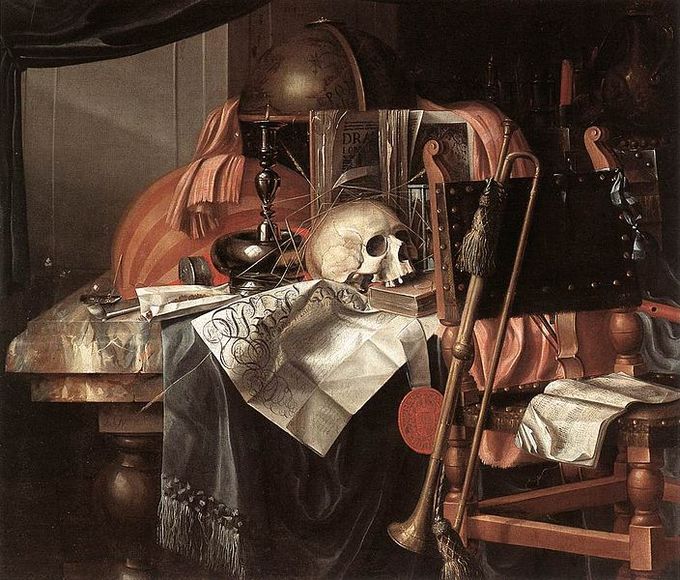25 Baroque Painting
Italian Painting in the Baroque Period
Baroque painting emerged in the 16th century (1500’s) and became extremely popular in the 17th century; the Roman High Baroque lasted from 1623 to 1667.
Key Points
- Baroque painting is the painting associated with the Baroque cultural movement, which began in Italy in the 17th century.
- In its most typical manifestations, Baroque painting is characterized by great drama, rich, deep color, and intense light and dark shadows.
- Caravaggio was an important figure in early Baroque painting during the 16th and 17th centuries and inspired many followers, known as Caravaggisti.
- In the later 17th century, artists such as Giordano increasingly produced monumental ceiling frescoes.
Key Terms
- tenebrism: A style of painting popularized by Caravaggio and his followers using very pronounced and dramatic light contrast (chiaroscuro), with darkness a dominating feature of the image.
- fresco: In painting, the technique of applying water-based pigment to wet or fresh lime mortar or plaster.
Relevant Italian Painters of the Time
Caravaggio
Caravaggio (1571–1610), born and trained in Milan, stands as one of the most original and influential contributors to late 16th century and early 17th century European painting. He was known for painting figures, even those of classical or religious themes, in contemporary clothing, or as ordinary men and women using models from the low-class establishments he frequented. His inclusion of the seedier side of life was in marked contrast to the trends of the time. He used tenebrism and stark contrasts between partially lit figures and dark backgrounds to dramatic effect.
Some of Caravaggio’s most famous paintings include The Calling of St. Mathew, St. Thomas, The Conversion of St. Paul, The Entombment, and The Crowning of the Christ. His use of light and shadow was emulated by the Caravaggisti, the followers of Caravaggio, such as Orazio Gentileschi (1563–1639), Artemisia Gentileschi (1592–1652/3), Garrit von Honthorst and Georges de la Tour.


Artemisia Gentileschi
Successful women painters are still relatively rare during the Baroque period, although not unheard of. Artemisia is an exception; her father, Orazio Gentileschi, was quite well-known in Rome and beyond. He died painting in the court of Charles I in London. It was Orazio who was his daughter’s teacher and who encouraged her career. She became known for an infamous incident in which a temporary tutor filling in for her father while he was painting in another city raped her. Lacking any practical recourse, Orazio and Artemisia took her rapist to court and won (not before Artemisia was put to the thumbscrew to get her to retract her accusation. She would not). She went on to paint all over Italy and also in England establishing herself as one of the best-known and successful painters of the period. Feminist art historians began to recover Artemisia’s contribution in the 1970s. Her work, like her father’s, is often notable for its Caravaggistic tenebrism.

Spanish Painting in the Baroque Period
The Spanish Golden Age is a period of flourishing in arts, coinciding with the political rise and decline of the Spanish Habsburg dynasty.
Key Points
- The Spanish Golden Age began in 1492, with the end of the Reconquista and the sea voyages of Christopher Columbus to the New World. Politically, it ended no later than 1659, with the Treaty of the Pyrenees ratified between France and Habsburg, Spain.
- The Italian holdings and relationships made by Queen Isabella’s husband and later Spain’s sole monarch, Ferdinand of Aragon, launched a steady traffic of intellectuals across the Mediterranean between Valencia, Seville, and Florence.
- Spanish art contained a strong mark of mysticism and religion that was encouraged by the Counter-Reformation and the patronage of Spain’s strongly Catholic monarchs and aristocracy. The Habsburgs, both in Spain and Austria, were great patrons of art in their countries.
- Diego Velázquez and Francisco de Zurbarán are often considered by scholars as the influential founders of a uniquely Spanish style of painting during the Baroque era.
Key Terms
- Counter-Reformation: The period of Catholic revival beginning with the Council of Trent (1545–1563) and ending at the close of the Thirty Years’ War (1648); sometimes considered a response to the Protestant Reformation.
- Habsburg: A Swabian noble family named after it, which became the ruling (hereditary) dynasty of Austria, at times other countries (mainly in Iberia and the former Burgundian territories), and supplied successive (elected) emperors of the Holy Roman Empire.
Overview: The Spanish Golden Age
The Spanish Golden Age is a period of flourishing in arts and literature in Spain, coinciding with the Baroque era and the political rise and decline of the Spanish Habsburg dynasty. It began no earlier than 1492 with the end of the Reconquista (Reconquest), the sea voyages of Christopher Columbus to the New World, and the publication of Antonio de Nebrija’s Gramática de la lengua castellana (Grammar of the Castilian Language). Politically, it ended no later than 1659 with the Treaty of the Pyrenees, ratified between France and Habsburg, Spain.
Spain in the time of the Italian Renaissance had seen few great artists come to its shores. The Italian holdings and relationships made by Ferdinand of Aragon, Queen Isabella’s husband and later Spain’s sole monarch, launched a steady traffic of intellectuals across the Mediterranean between Valencia, Seville, and Florence. Luis de Morales, one of the leading exponents of Spanish Mannerist painting, retained a distinctly Spanish style in his work reminiscent of medieval art. Spanish art, particularly that of Morales, contained a strong mark of mysticism and religion that was encouraged by the Counter-Reformation and the patronage of Spain’s strongly Catholic monarchs and aristocracy.
Artists of the Golden Age of Spain
The Habsburgs, both in Spain and Austria, were great patrons of art in their countries. Diego Velázquez and Francisco de Zurbarán are often considered by scholars as the influential founders of a uniquely Spanish style of painting during the Baroque era.
Diego Velázquez
Diego Velázquez is widely regarded as one of Spain’s most important and influential artists. He was an individualistic artist of the contemporary Baroque period and most well-known as a portrait artist. In addition to numerous renditions of scenes of historical and cultural significance, he painted scores of portraits of the Spanish royal family, other notable European figures, and commoners, culminating in the production of his masterpiece Las Meninas (1656). Velázquez was a court painter for King Philip IV and found increasingly high demand for his portraits from statesmen, aristocrats, and clergymen across Europe. His portraits of the King, his chief minister, the Count-duke of Olivares, and the Pope himself demonstrated a belief in artistic realism and a style comparable to many of the Dutch masters.
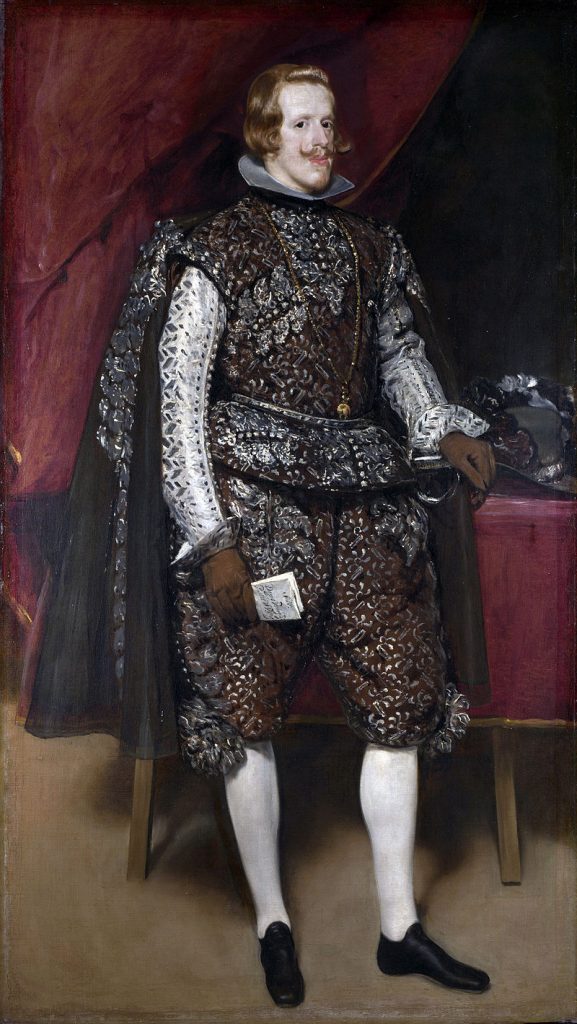
Velazquez’s most famous painting, however, is the celebrated Las Meninas (1656), in which the artist includes himself as one of the subjects. Las Meninas (Spanish for “The Ladies in Waiting”) is a painting with complex and enigmatic composition that raises questions about reality and illusion, creating an uncertain relationship between the viewer and the figures depicted. Because of these complexities, Las Meninas has been one of the most widely analyzed works in Western painting.
The painting shows a large room in the Royal Alcazar of Madrid during the reign of King Philip IV and presents several figures, most identifiable from the Spanish court, captured in a particular moment as if in a snapshot. Some look out of the canvas towards the viewer, while others interact among themselves. The young Infanta Margaret Theresa is surrounded by her entourage of maids of honor, chaperone, bodyguard, two other figures, and a dog. Just behind them, Velázquez portrays himself working at a large canvas. Velázquez looks outwards, beyond the pictorial space to where a viewer of the painting would stand. In the background there is a mirror that reflects the upper bodies of the king and queen. They appear to be placed outside the picture space in a position similar to that of the viewer, although some scholars have speculated that their image is a reflection from the painting Velázquez is shown working on.
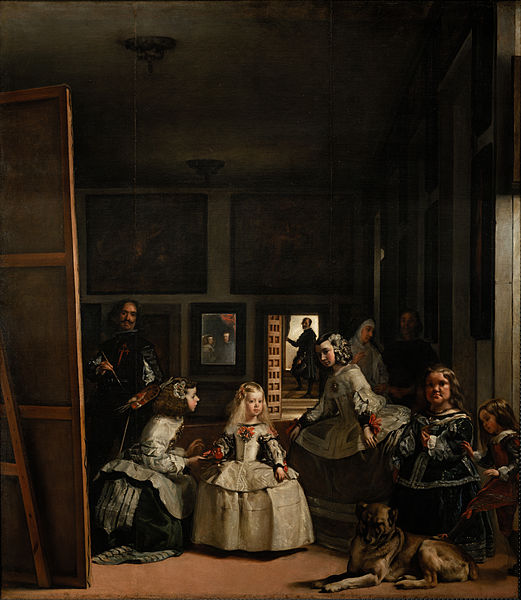
Religion in the Art of the Spanish Golden Age: Francisco de Zurbarán
The religious element in Spanish art, in many circles, grew in importance with the Counter-Reformation. The austere, ascetic, and severe work of Francisco de Zurbarán exemplified this thread in Spanish art, along with the work of composer Tomás Luis de Victoria. Philip IV actively patronized artists who agreed with his views on the Counter-Reformation and religion. The mysticism of Zurbarán’s work—influenced by Saint Theresa of Avila—became a hallmark of Spanish art in later generations.
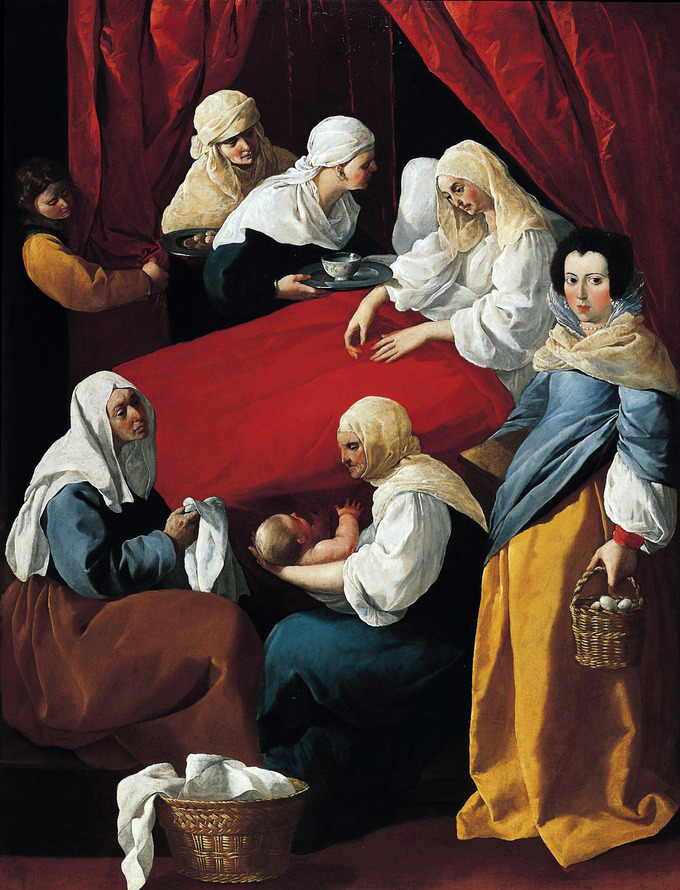
Influenced by Caravaggio and the Italian masters, Zurbarán devoted himself to an artistic expression of religion and faith. He is known primarily for his religious paintings depicting monks, nuns, and martyrs, as well as for his still-lifes. Zurbarán gained the nickname Spanish Caravaggio, owing to the forceful, realistic use of chiaroscuro in which he excelled.

His paintings of St. Francis of Assisi, the immaculate conception, and the crucifixion of Christ reflected a third facet of Spanish culture in the 17th century, against the backdrop of religious war across Europe. Zurbarán broke from Velázquez’s sharp realist interpretation of art and looked, to some extent, to the emotive content of the painter El Greco and the earlier Mannerist painters for inspiration and technique, though Zurbarán respected and maintained the lighting and physical nuance of Velázquez.
French Painting in the Baroque Period
17th century painting in France was influenced by Italian Baroque sensibilities as well as the Classical tastes of the powerful monarchy.
Key Points
- King Louis XIV established the Academy of Painting and Sculpture, which propagated a style of art with distinctly Classical affectation. Important painters of 17th century France include Simon Vouet, Charles Le Brun, Nicolas Poussin, Claude Lorrain, and Georges de la Tour.
- Simon Vouet is known for introducing Baroque style painting to France. Charles Le Brun was a student of Vouet and the most important painter in the court of King Louis XIV. He was responsible for creating the French Academy and for the interior decoration at the Palace of Versailles.
- Nicolas Poussin is known for his Classical style paintings that favor clarity, logic, order, and clean lines over color. Claude Lorrain is known particularly for his work in landscape paintings.
- Georges de la Tour was a French Baroque painter known for painting religious chiaroscuro scenes.
Key Terms
- chiaroscuro: An artistic technique popularized during the Renaissance, referring to the use of exaggerated light contrasts in order to create the illusion of volume.
- altarpiece: A work of art suspended above and behind a table used for religious purposes; (altar) in a church.
Overview: The Baroque Era in France
17th century painting in France was influenced by Italian Baroque sensibilities as well as the Classical tastes of the powerful monarchy. These two strong influences resulted in a style that was unique to France and culminated in the art produced for King Louis XIV. The reign of Louis XIV saw a shift from Mannerist and Baroque styles popular in the early part of the century, during the reign of Louis XIII, toward a more prescribed Classical style. Louis XIV established royal control over artisanal production in France, prohibiting the purchase of luxury goods from abroad. He also established the Academy of Painting and Sculpture, which maintained a hierarchy of genres in painting and a distinctly Classical flavor.
Influential French Painters
Important painters of 17th century France include Simon Vouet, Charles Le Brun, Nicolas Poussin, Claude Lorrain, and Georges de la Tour. 17th century painting in France was divided: on one hand there was influence from the Italian Baroque style as seen in the work of de la Tour; on the other was a distinctive turn towards a rigid, Classical style that was favored by the monarchy, and exemplified by the works of Le Brun, Poussin, and Lorrain. The convergence of these two styles gave 17th century painting an aesthetic tone that was wholly unique to France.
Simon Vouet and Charles Le Brun
Simon Vouet is known for introducing Baroque style painting to France. He studied in Italy and learned the techniques of the Italian masters, which he imbued with his own sensibilities. He was made “premier peintre du Roi” by Louis XIII, who commissioned numerous works from him. Charles Le Brun was Vouet’s most influential pupil and was to become an important painter in the court of King Louis XIV. Le Brun worked primarily for Louis XIV, and his most important works reside at the Palace of Versailles. Mostly producing battle pieces and altarpieces, Le Brun’s paintings exemplify a synthesis of Baroque and Classical styles.
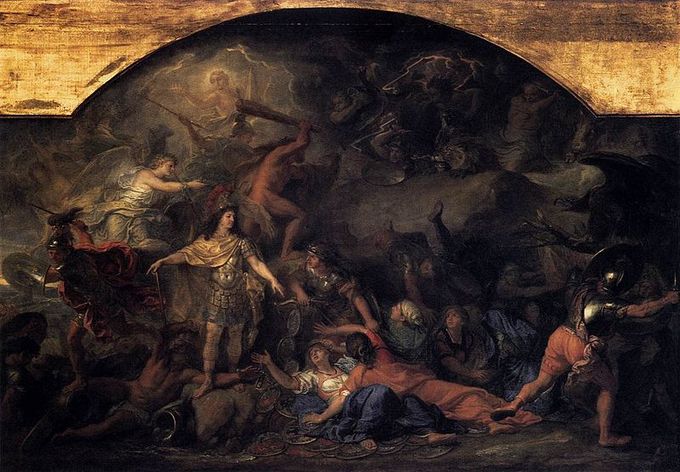
Nicolas Poussin and Claude Lorrain
Nicolas Poussin is known for his Classical style paintings created in 17th century France. His work features clarity, logic, order, and clean lines over color, serving as a counterpoint to Baroque style painting. He spent most of his life working in Rome and became a favorite painter of King Louis XIV. Claude Lorrain is known particularly for his work in landscape paintings. He earned the patronage of Pope Urban VIII, after which his fame grew rapidly. Lorrain and Poussin were friends and were known to have traveled the Italian countryside together.
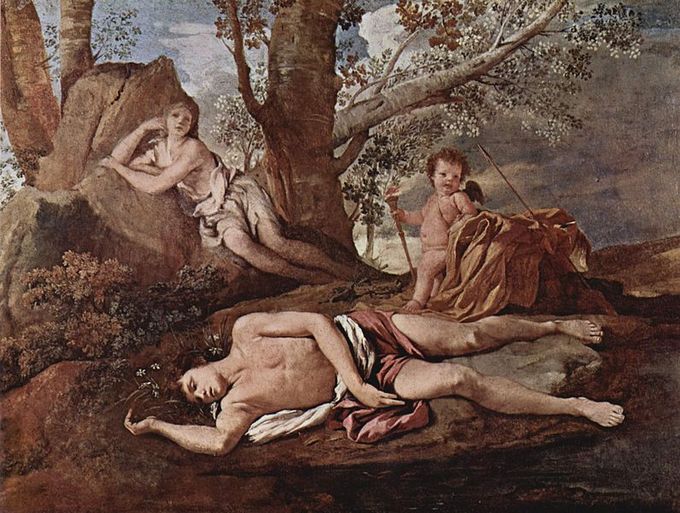
Georges de la Tour
Georges de la Tour was a French Baroque painter known for painting religious chiaroscuro scenes lit by candlelight. His work shows a great deal of influence from Caravaggio, characterized by the painted effects of light and dark, but is unique in that he applies this technique to genre subjects.
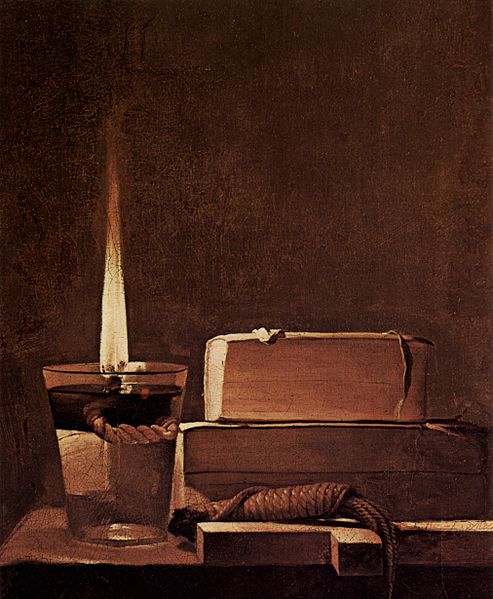
Flemish Painting in the Baroque Period
The style of painting produced in Flanders during the 17th century is known as Flemish Baroque.
Key Points
- Flemish Baroque painting is notable for the fact that it was separated into the different thematic categories of history, portraiture, genre, landscape, and still life.
- Peter Paul Rubens was the preeminent painter of the Flemish Baroque style; he was the dominant artist of history painting and drew influence from Italian painting.
- The paintings of Adriaen Brouwer exemplified the genre painting of 17th century Flanders . They depicted scenes of the everyday life of peasants and were notable for their expressive facial studies.
- The vanitas, a type of still life painting that is meant to illustrate the meaninglessness of earthly life and the transience of all earthly pursuits, became very popular in 17th century Flemish painting.
Key Terms
- monumental: Large, grand, and imposing.
- Vanitas: a type of painting with iconography that symbolizes the fleeting quality of life, fame, riches, and happiness on earth.
Overview: Flemish Baroque
The style of painting produced in Flanders during the 17th century is known as Flemish Baroque. This style was produced between about 1585, when the Dutch Republic split from the Habsburg Spain regions of the south, until about 1700, when the Habsburg rule ended after the death of King Charles II. Antwerp—the home of Peter Paul Rubens and Anthony Van Dyck—figured prominently as a point of artistic production during this time, as did Brussels and Ghent to a lesser extent. Peter Paul Rubens, the preeminent painter of the Flemish Baroque style, had a strong influence on the artistic aesthetic of the 17th century.
Categories of Flemish Painting
Flemish Baroque painting is notable for the fact that it was separated into different thematic categories, and artists of the time tended to specialize in one of these areas. These genres included history, portraiture, genre, landscape, and still life paintings. A similar hierarchy of genres will become formalized as part of the French Academy in the 17th century.
History Painting
History painting, considered the most noble genre during the 17th century, was comprised of depictions of historical, biblical, mythological, and allegorical scenes. Peter Paul Rubens was the dominant painter in this category, though his student Anthony Van Dyck also became prominent. More than in any other category, Flemish history painters continued to draw influence from Italian painting. Rubens spent nine years in Italy studying the work of the masters, and he introduced the monumental hunting scene to painting. This is exemplified in his work Wolf and Fox Hunt, which depicts a noble battle on a large scale and was inspired by his study of classical antiquity.
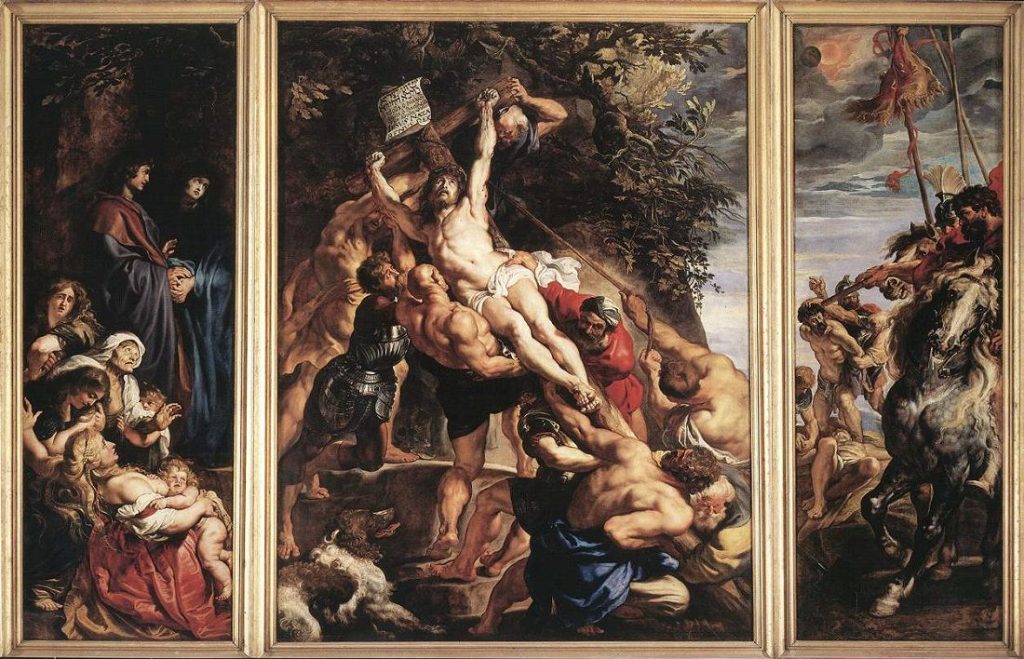
Portrait Paintings
Portrait paintings were, for the most part, monumental or life sized, though the group and family portrait came into prominence during the 17th century. Although he was not a portrait painter, Rubens completed some early works in this category. He also exerted influence through his student, Anthony Van Dyck, who became the court painter for Charles I of England and an influence on subsequent portraiture in England.
The English preferred to import artists rather than promote home-grown ones. English painting will not come into its own until the landscape painters of the next century.
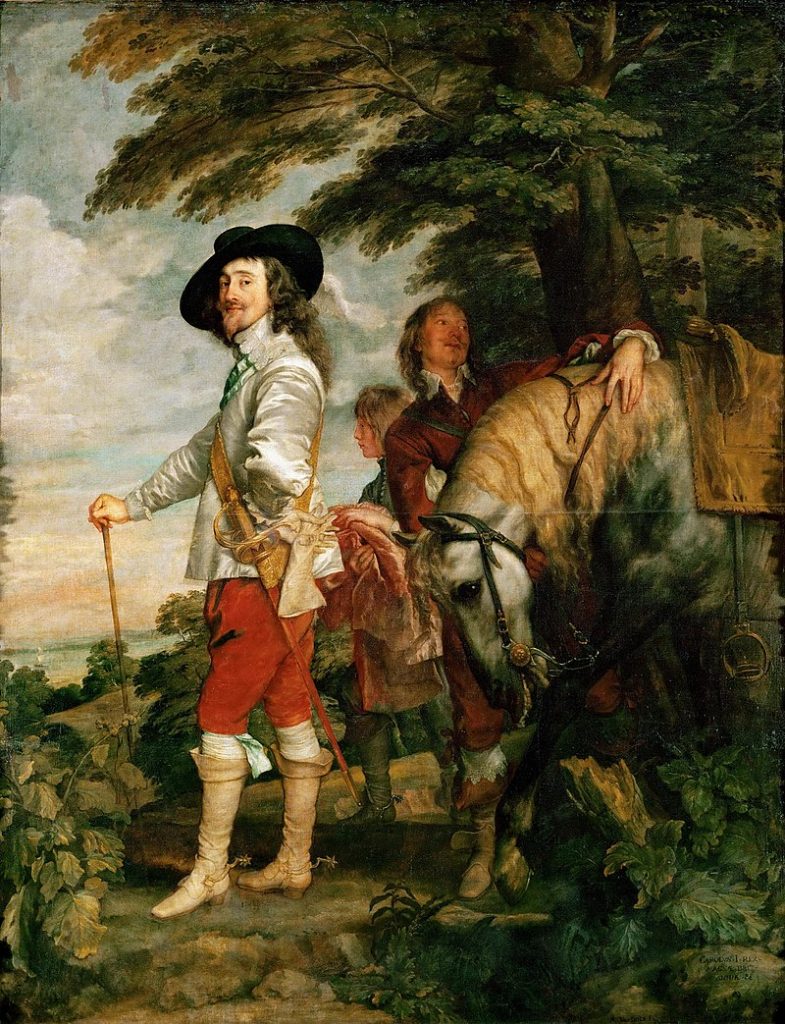
Genre Painting
Genre paintings depict scenes from everyday life and were very common in 17th century Flanders. These paintings feature figures with no specific identity, commonly engaged in activities associated with “the peasant life.” Many genre artists follow the tradition of Peter Brueghel the Elder in their depiction of the lower classes. The paintings of Adriaen Brouwer, which often show peasants fighting and drinking, serve as an example of Flemish genre painting. Brouwer is known for painting his subjects in interior, rather than exterior, scenes. He was also known for his expressive facial studies, characteristic of a genre called “tronies” (faces) and exemplified in works such as The Smokers.

Landscapes
Landscape painting was another major category in the 17th century. The style developed from earlier 16th century Flemish landscape paintings, which were not particularly realistic and employed the semi-aerial, or Cosmic, view typical of Peter Brueghel the Elder. Architectural interior painting also became popular around this time, depicting the realistic interiors of existing churches and cathedrals.
Still Lifes
Floral still life painting was widespread in 17th century Flanders, popularized by Brueghel the Elder around 1600. His sons, Jan Brueghel the Younger and Ambrosius Brueghel, were also known flower specialists of the time. Other subjects or subcategories of still life painting included the banquet still life, the animal still life, and garland scenes. Still life paintings often had an underlying moralistic message concerning the brevity of life, a trait exemplified by the “vanitas.” A vanitas is a symbolic still life painting that is meant to illustrate the meaninglessness of earthly life and the transience of all earthly pursuits. Vanitas paintings were very popular in 17th century Flemish and Dutch work, and they often include iconographic symbols such as skulls, flowers, rotting fruit, clocks, watches, smoke, and hourglasses, all of which are meant to convey the ephemeral (short and fleeting) nature of life on earth.
